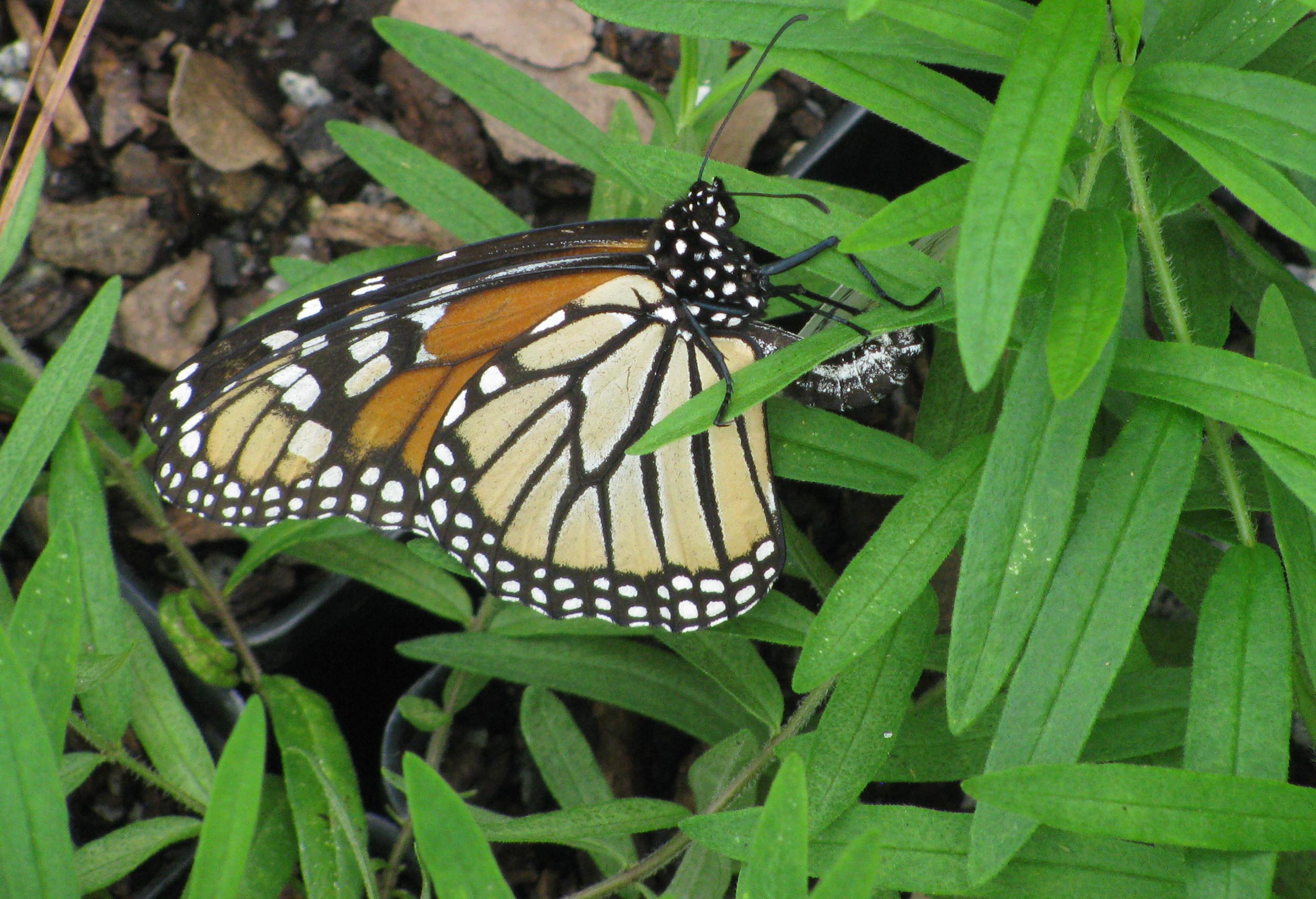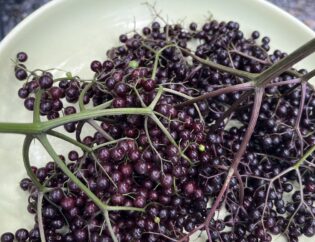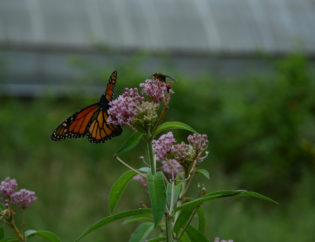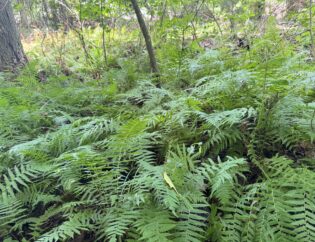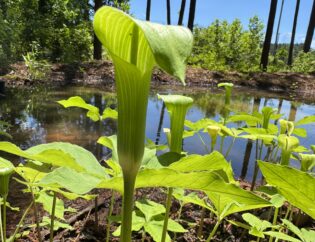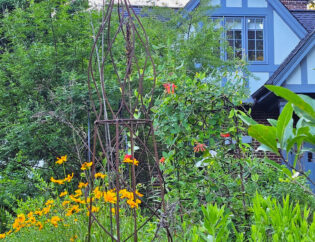Milkweeds (Asclepias spp.) are host to a number of insects that are well adapted to feed on this otherwise toxic plant. The most famous is the Monarch Butterfly caterpillar, which like all caterpillars starts out tiny:

Those lines in the background are my fingerprints. Caterpillars grow quickly because they eat, and eat, and eat. That’s really all they do is eat and grow through stages called instars as they covert leaf matter into body mass. In the final stages they are much larger:
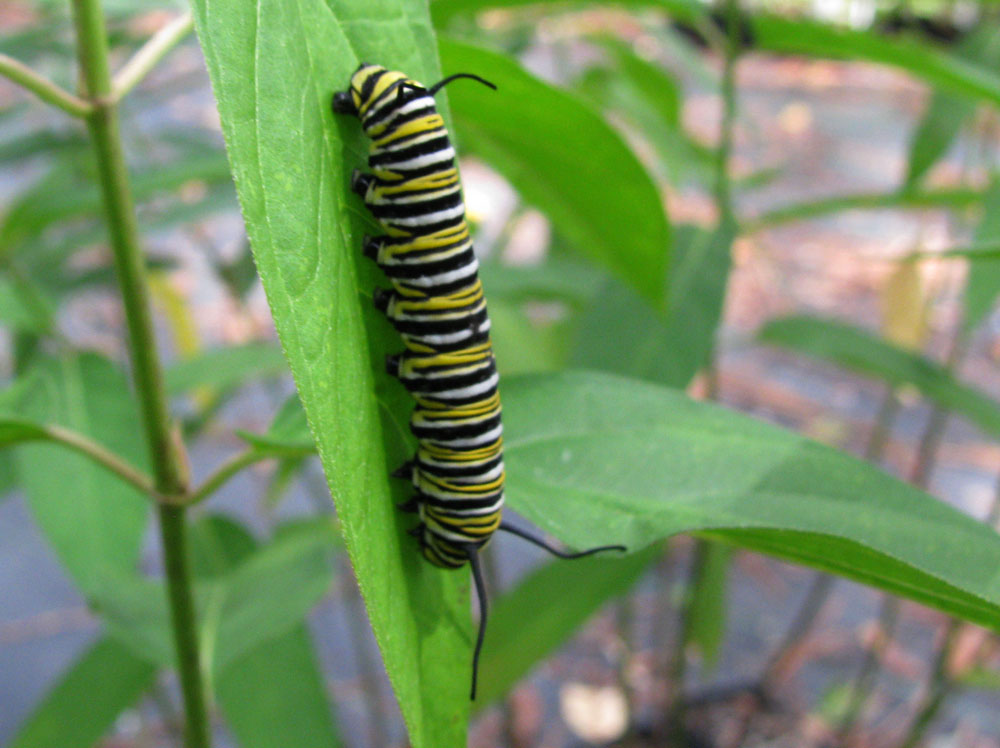
The bright colors are to warn would be predators (i.e. birds) that their bodies are full of foul tasting, potentially poisonous compounds from the milkweed leaves.
Monarch caterpillars aren’t the only ones to eat milkweed, or to have those black and yellow stripes. The Milkweed Tussock Moth caterpillars (Euchaetes egle) also display the black and yellow warning signs:
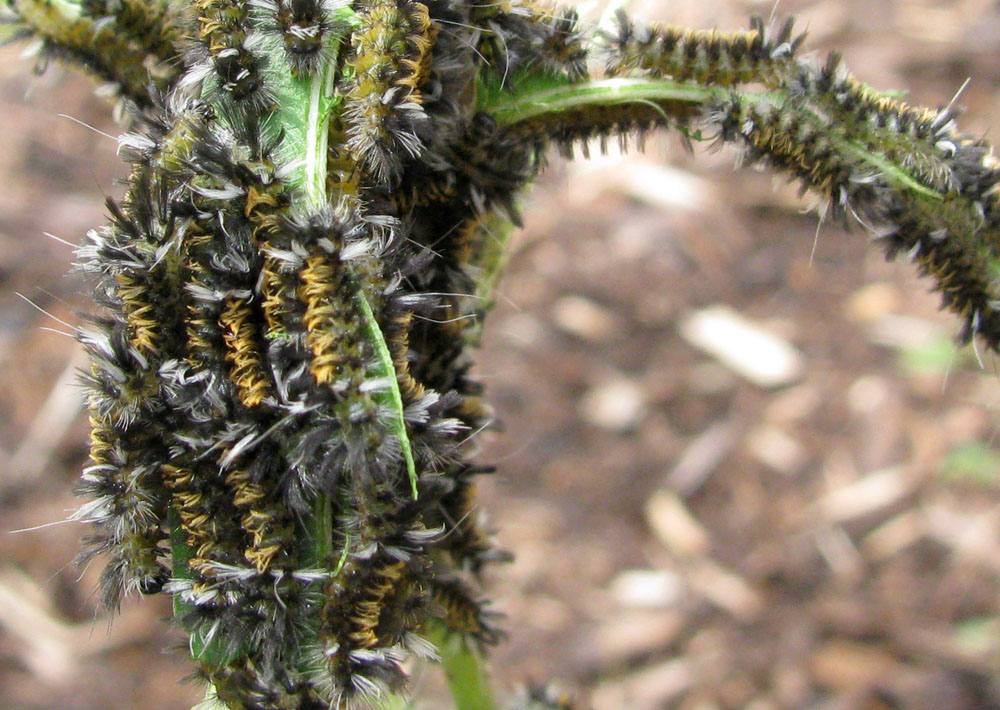
They also have long stiff hairs to deter birds from trying to eat them. Unlike Monarchs, these caterpillars are gregarious and will congregate in large groups. This swarm defoliated 6 plants before I isolated them. The plants have evolved with this, and respond with a new burst of leaf growth a week or two later once the ravenous caterpillars have starved or pupated.
Another denizen of the milkweed patch is the aptly named Large Milkweed Bug (Oncopeltus fasciatus). It also sports bright colors to warn of the toxins it has ingested.

Seen here are the smaller, wingless nymph stage at left and the winged adult on the right. They are reluctant to stay still long enough for a good picture because I am more often hunting them down with a can of soapy water than a camera. These insects have specialized mouth parts to pierce milkweed seed pods and devour the seeds inside. I am trying quite hard to get fertile milkweed seeds even without them eating the pods, so a watery grave is all I have for them.
Oleander aphids (Aphis nerii) also present problems for those who grow and sell milkweed plants. They are an invasive insect in the US, as they evolved feeding on Oleander plants in the Mediterranean region. Oleander plants just happen to produce the same defensive chemicals, cardiac glycosides, that Milkweed plants do. When Oleander was introduced to the US as a garden plant the aphids came with it and soon began to feed on the native milkweeds as well.

They are now pretty much synonymous with milkweed, and can rob the plant of its energy by sucking out the juices from leaves and stems. As if that wasn’t bad enough, the aphids secrete a sugary substance called honeydew from their backsides, and this often nurtures the growth of fungi on the plant that can further weaken it and lead to the death of the plant. Controlling the spread of these nasty aphids can be tough. The simplest method is to blast them off the plants with a jet of water. It doesn’t necessarily kill them, but gives the plant a respite until they find their way back. Soapy water is another favorite, and it will actually kill them.

Soapy water also kills caterpillars and the eggs they hatch from though, so I’ve pretty much given up on spraying the plants with it. I usually just spot treat the larger infestations by knocking the aphids into my trusty can of soapy water. Spraying Neem Oil or soapy water will reduce the aphid numbers, but it will also kill off numerous unrelated insects (like caterpillars) and aphid predators as well. One positive sign I have noticed since discontinuing spraying is the presence of more Ladybug (Coccinella spp.) larvae. The little crocodile-looking larva are predators that love to eat aphids and numerous other plant-feeding insects.

After eating lots of aphids they pupate into the cheery red and black beetles that continue to feed on many of the insects that we call “crop pests.” Yet another reason to plant milkweed, as the ladybugs and their larvae do not distinguish between the green native aphids and the yellow invasive ones. It’s just another food source that will keep them around to guard your other plants.
Those are just a few of the insects that call Milkweed home. You can invite them into your community simply by planting any of the multiple Asclepias species and they will find it. Of that you can be sure.
